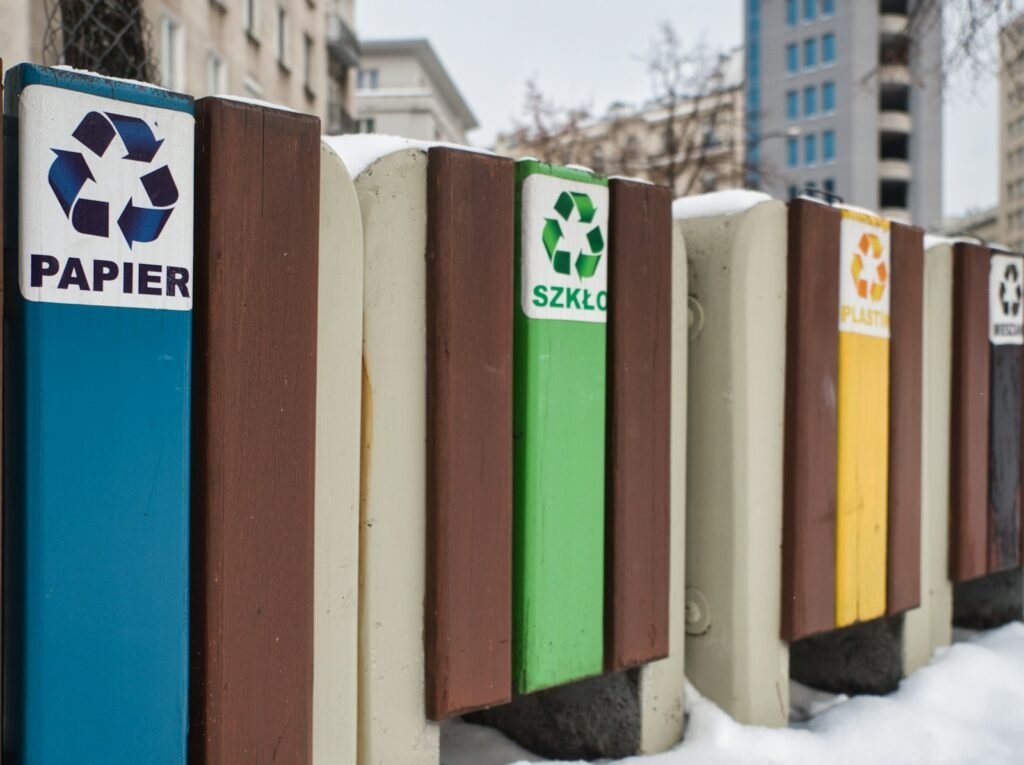
The Basics of Carbon Fiber
Imagine a substance so formidable and adaptable that it’s revolutionizing the field of construction and engineering. Yes, I’m referring to none other than carbon fiber. It’s lightweight, robust, and undeniably cool – truly the superhero of materials. But how did this extraordinary material come into existence? Allow me to guide you through the intricate world of carbon fiber.
In the 1950s, a brilliant mind by the name of Dr. Roger Bacon aptly described it as “An exciting and mysterious material.” And indeed, he hit the nail on the head! Carbon fiber is comprised of delicate fibers primarily made up of carbon atoms. These fibers are intricately woven together and layered with resin to produce a durable, rigid substance that defies logic – lighter than air yet stronger than steel. It’s like magic in material form – robust yet so ethereal that you could almost forget its presence altogether. So, as you walk across a bridge or pedal away on your bike, remember that sleek, cutting-edge appearance owes much gratitude to our pal carbon fiber!
The Advantages of Using Carbon Fiber in Bridges
The enigmatic allure of carbon fiber in bridge construction is truly mesmerizing! Let us explore the mystique behind why this substance has revolutionized the game. To begin with, the sheer strength and weightlessness of carbon fiber make it an exquisite choice for bridges. As the eminent engineer John Augustus Rbling once proclaimed, “My wire-rope system heralds a new era in suspension bridges, distinct from all predecessors yet harmonious with them.” In similar fashion, carbon fiber introduces a novel perspective to bridge architecture, offering unparalleled robustness without the cumbersome load of conventional materials.
Furthermore, the pliability of carbon fiber paves the way for imaginative and groundbreaking bridge designs that were previously inconceivable. The illustrious architect Frank Lloyd Wright famously declared, “Observe nature, embrace nature, remain connected to nature. It shall never disappoint you.” Carbon fiber epitomizes this ethos by emulating nature’s fortitude and resilience, empowering engineers to push beyond conventional limits in bridge construction. This material unveils a realm of possibilities where bridges can transcend mere functionality to become breathtaking masterpieces seamlessly integrated into their surroundings.
Common Applications of Carbon Fiber in Bridge Construction
Did you ever imagine that carbon fiber, typically associated with luxury cars and cutting-edge gadgets, would find its way into the very heart of our modern infrastructure: bridges? The integration of this super material in bridge construction is truly mind-boggling. Where exactly can we witness the marvels of carbon fiber in action within the realm of bridges? Let’s delve deeper into this enigmatic world, shall we?
Let’s start by exploring how carbon fiber reinforces concrete elements in bridges. It’s not just about adding strength; it’s about infusing your bridge with a touch of panache. Structural engineer Victoria Addis aptly describes it as, “Carbon fiber composites offer an efficient and visually appealing solution for fortifying bridge structures.” So, the next time you traverse a bridge, bear in mind that beneath all that concrete lies a hint of carbon fiber enchantment holding everything intact. After all, who wouldn’t appreciate a dash of magic during their daily commute?
How Carbon Fiber Strengthens Bridge Structures
Envision a bridge, standing tall and proud, bearing the weight of countless vehicles and pedestrians each day. Now, picture this bridge fortified with carbon fiber – a material so robust and versatile that it can completely transform the very essence of the structure. Carbon fiber is akin to the superhero of bridge construction, swooping in to rescue the day with its exceptional strength-to-weight ratio and unparalleled durability.
When carbon fiber is incorporated into bridge structures, it functions as a covert weapon, strengthening weak points and improving overall stability. As the renowned engineer Isambard Kingdom Brunel once proclaimed, “The utilization of carbon fiber in bridges is a game-changer, pushing the boundaries of what’s conceivable in structural engineering.” With its extraordinary tensile strength and resistance to corrosion, carbon fiber offers a level of support that traditional materials can only fantasize about. It’s as though we are equipping the bridge with a suit of armor, prepared to endure whatever challenges may come its way.
The Environmental Impact of Using Carbon Fiber in Bridges
In the realm of discussing the environmental repercussions of utilizing carbon fiber in bridges, one is faced with a perplexing juxtaposition between breakthrough and conservation. Some may furrow their brows and ponder, ‘But isn’t carbon fiber a byproduct of excessive energy consumption?’ Ah, my dear readers, allow me to lead you through this tangled maze of eco-conscious innovation.
Imagine a time when carbon fiber was merely a whisper on the breeze, and the brilliant mind of R. Buckminster Fuller contemplated, “Pollution is simply resources we neglect to harness. We let them scatter due to our ignorance of their worth.” How times have evolved! As carbon fiber infiltrates the domain of bridge construction, we stand at a junction where resilience meets sustainability. Its ethereal lightness coupled with its formidable strength diminishes the necessity for bulky materials and consequently reduces construction waste – truly an orchestration of vigor and environmental mindfulness!
Innovations in Carbon Fiber Technology for Bridge Repair
The realm of bridge repair is a place where the unexpected meets the extraordinary, where innovation and technology dance a mesmerizing tango to ensure our seamless journey. And when delving into the realm of carbon fiber technology for bridge repair, one can’t help but be awestruck by the sheer brilliance it brings. Picture a material that defies all norms – stronger than steel yet lighter than air; that’s carbon fiber in all its enigmatic glory. As the esteemed engineer Joseph Stalin once mused, “Strength resides in the very bones of a structure,” and with carbon fiber, those bones are injected with an electrifying surge.
But wait, there’s more! A groundbreaking development in carbon fiber technology has birthed self-healing carbon fiber composites – yes, you read that correctly: self-healing. Like a mythical hero endowed with regenerative powers, these composites possess the uncanny ability to mend minor cracks and damages autonomously. It’s almost as if sorcery blends seamlessly with science in this wondrous creation. Envision a bridge capable of healing itself – now that’s an innovation so futuristic even Marty McFly himself would raise an impressed eyebrow at its marvels.
Cost Considerations of Using Carbon Fiber in Bridge Construction
Oh, the enigmatic conundrum of considering the costs of utilizing carbon fiber in bridge construction! One cannot deny that delving into the realm of building bridges with this extravagant material may leave your purse strings feeling a bit looser. However, as the illustrious Warren Buffett once sagely remarked, “Price is what you pay, value is what you get.” And let me tell you, the value inherent in using carbon fiber in bridges is truly mind-boggling.
Indeed, while the initial investment required for carbon fiber may appear daunting, envision it as sowing seeds for a money tree – its benefits will blossom over time. Thanks to carbon fiber’s remarkable strength-to-weight ratio, bridges can be constructed with less bulk overall. This not only trims down construction expenses but also slashes maintenance costs in the future. So even though your finances may protest initially, recall the profound words of Leonardo da Vinci – “Simplicity is the ultimate sophistication.” And what could be more sophisticated than a bridge that embodies both resilience and cost-efficiency?
Challenges and Limitations of Carbon Fiber in Bridge Repair
The perplexing world of utilizing carbon fiber for bridge repair is a topic that leaves engineers scratching their heads and carbon fiber enthusiasts on the edge of their seats. While carbon fiber emerges as a hero in the realm of materials, showcasing remarkable strength and an ethereal weight, its limitations become glaring when faced with the complexities of bridge repair.
One particular challenge that frequently presents itself is the issue of compatibility. Despite being hailed as a modern marvel, carbon fiber doesn’t always harmonize well with its surroundings. The task of ensuring seamless bonding between existing structures and carbon fiber reinforcements can be likened to coaxing a reluctant cat into taking a bath not entirely impossible but undoubtedly trying one’s patience. Environmental elements further complicate matters; extreme temperatures, moisture, and UV exposure all pose potential obstacles to the long-term durability of carbon fiber in bridge repairs. Thus, while undeniably robust, even carbon fiber must acknowledge its vulnerability a stark truth that even the most resilient materials must confront from time to time.


